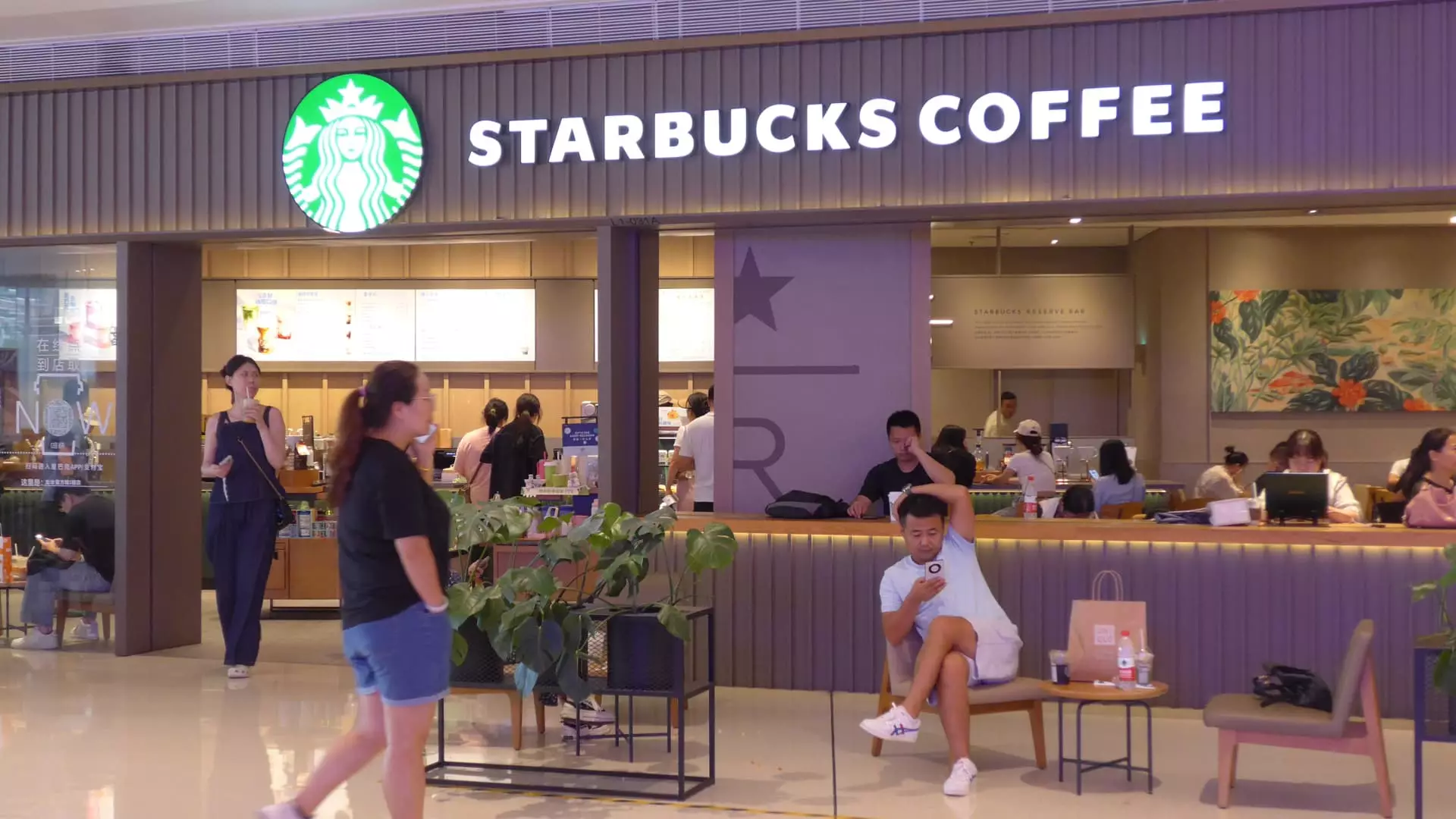The Evolving Landscape of Coffee Consumption in China: Challenges for Starbucks

Starbucks, a brand synonymous with coffee culture worldwide, finds itself navigating a tumultuous landscape in China. Newly appointed CEO Brian Niccol recently expressed the need to immerse himself in the Chinese market to comprehend the substantial decline in same-store sales, which fell by 14%. This alarming statistic is indicative of a shift in consumer preferences and increased competition within the coffee sector. Niccol’s impending visit to China serves as a crucial opportunity to delve into the intricacies of these challenges and devise a strategy to reclaim market share.
The rise of local competitors has been particularly pronounced, with more than 7,300 Starbucks locations facing stiff competition from homegrown initiatives. Among these rivals is Luckin Coffee, which, despite its tumultuous past marred by accounting scandals and a brief de-listing from Nasdaq, has surged to prominence with over 20,000 stores. Additional players in the burgeoning coffee market include Cotti Coffee, Manner, M Stand, Seesaw, and Nowwa, all of which are rapidly expanding their presence in an increasingly crowded space.
One of the most significant factors influencing Starbucks’ position in China is pricing. In a country where economic growth is faltering, consumers are becoming more price-sensitive, seeking value without compromising quality. The stark contrast in pricing between Starbucks and its competitors is striking. For instance, a small latte at Starbucks costs $4.22, while similar offerings at Luckin, Cotti, and Manner are available for as little as $1.75. Promotions further exacerbate this issue, with Luckin recently offering drinks at a jaw-dropping price of 90 cents.
While Starbucks’ business model traditionally emphasizes a premium experience, its rivals are gaining traction by offering lower prices in more modest settings. Many Chinese coffee shops favor a minimalist approach, operating with limited staff—sometimes just one barista—and offering basic food menus. This simplification allows them to optimize costs and pass savings onto consumers, effectively undercutting Starbucks.
Despite the price competition, Starbucks continues to be seen as a desirable location for social interaction and business meetings. Its well-designed, comfortable interiors and uniform service standards create a welcoming atmosphere, distinguishing it from the often cramped and austere settings of many local chains. However, this perception may not be enough to stave off the encroachments of more competitively priced options.
Starbucks has attempted to adapt by introducing its own express service, Starbucks Now, aimed at city dwellers who prefer a quick pickup through app-based orders. However, this model does not offer any additional discounts or significant changes in menu variety compared to traditional outlets. As a result, consumers may still perceive other coffee shops as offering better value, even for a quicker service experience.
Additionally, creativity in product offerings has become a hallmark of success for many emerging coffee brands in China. By leveraging local tastes and preferences, these companies have successfully attracted consumers looking for something beyond the conventional coffee experience offered by Starbucks. For instance, many Chinese brands are blurring the lines between coffee and tea, experimenting with unique flavor combinations that include fruits, flowers, rice, and even cheese in their drinks.
Manner’s focus on locally sourced beans and sleek brand positioning appeals particularly to environmentally conscious consumers. Meanwhile, brands like M Stand and Seesaw are targeting the upscale segment with luxurious offerings, such as lattes served in edible oatmeal cups. This innovative spirit both reflects consumer desires for novelty and represents a formidable challenge for Starbucks, which relies heavily on its established menu.
Starbucks also faces stiff competition from a diverse array of tea shops, which have seen exponential growth due to their pricing strategy. Tea specialty shops such as ChaPanda and Auntea Jenny are intensifying competition yet again, as they offer products at a fraction of Starbucks’ prices. For example, Auntea Jenny’s lattes retail for just $2.67, showcasing how consumers can indulge in similar beverages without the extravagant expenditure associated with Starbucks.
With new competitors emerging both from within China and internationally—such as Tim Hortons and Costa Coffee—Starbucks must take decisive action to strengthen its foothold in this challenging market. Ultimately, understanding local consumer behavior and market dynamics will be essential for any future growth strategy. The landscape of coffee consumption in China is evolving rapidly, and Starbucks must recalibrate its approach to maintain its aspirational brand status while simultaneously appealing to a frugal, demanding consumer base. Only time will tell how successfully Niccol and his team navigate these turbulent waters.





